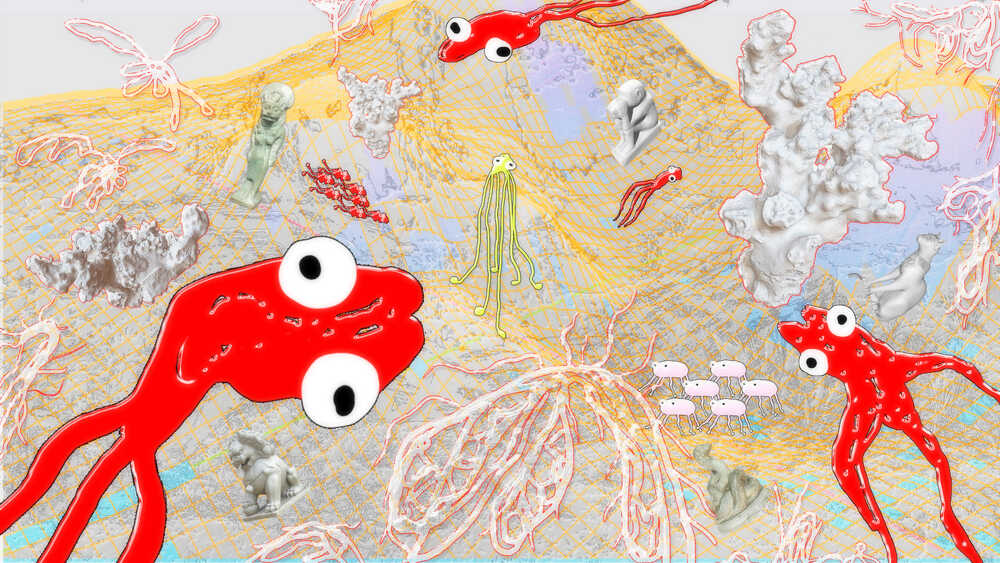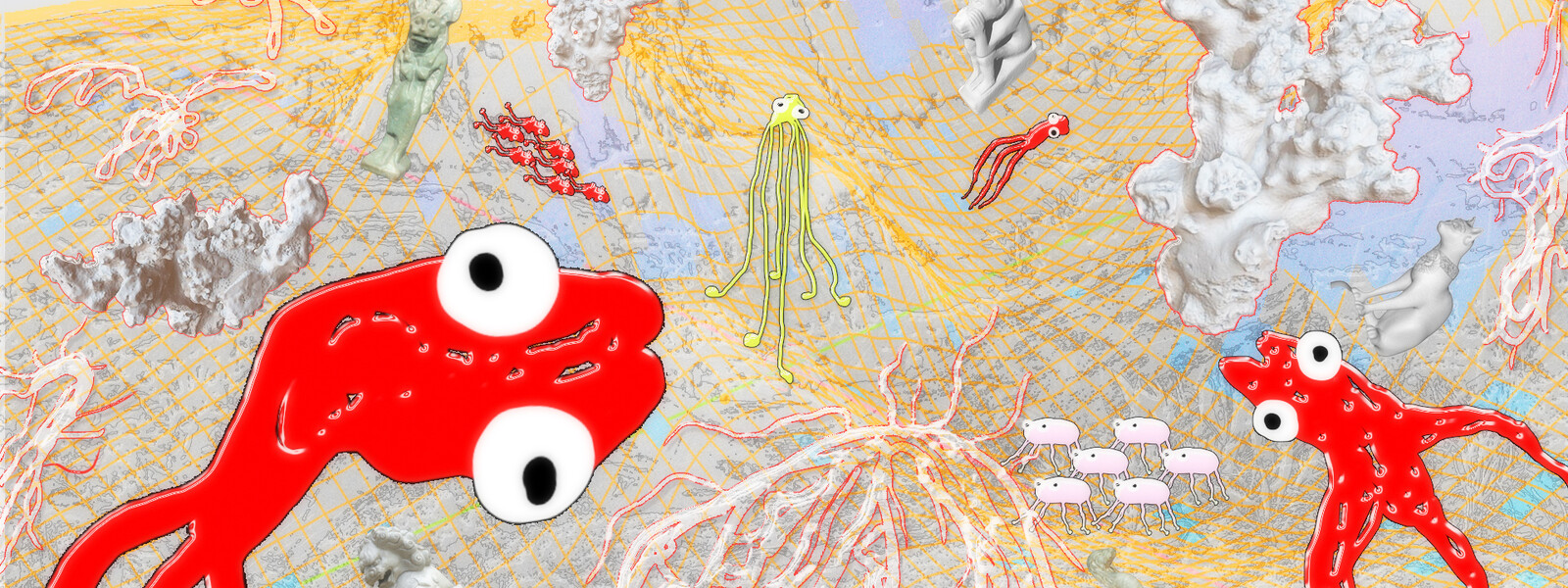Reimagining Reality
When sharing with people around me that I was writing a piece on the topic ‘Metaverse,’ I sensed clear scepticism. Scepticism towards yet another technology that feels completely separated from actual issues and our reality. Another hyped invention within cyberspace that ignores the real-world consequences of virtual ‘innovation’. But perhaps there is something more here.
It is Friday morning and the third day of the Research Festival that Design Academy Eindhoven is hosting. With our bodies left on the fourth floor of the Witte Damme building, our minds get to step into another reality — a fictive one where technology makes tangible the theories of Xenofeminism and Glitch Studies.
Through the social XR experience The Xalon, created by Jenn Leung, Serra Ozdemir and Arshiya Vij, we are — for a brief moment — invited into their virtual environment, a place where alienation creates togetherness. 3D scans of safe spaces are brought into a shared realm experienced through the giant screen in front of us. A wicked space of radical inclusivity, where ‘errors’ are embraced as a correction to the ‘machine’. The Xalon is an act against the tech giants’ attempt to commercialise creative technologies.
Another example of a metaverse where similar values are implemented can be found in those created by Keiken, the cross-dimensional collaboration practice of artists Tanya Cruz, Hana Omori and Isabel Ramos. With XR technology entwined with other mediums such as performances and installations, they create a metaverse where new structures, and new ways of existing take shape.
More than being an expression of a new invention in the digital realm, metaverses like The Xalon and the ones created by Keiken illustrate how tools such as XR and augmented reality can be used to create imagined and potential futures. With the help of technology, these spaces become tangible when induced into the so-called “real world”, our current reality.
“The internet was supposed to be a messy heterotopia… that is not what it has become”
As the only species with the ability to create fictional narratives and believe in them as if they are real, defining reality is becoming increasingly tricky. On one hand, the major systems our societies are entangled with, such as religion, money or nationhoods- are fictive and simply exist because we chose to believe in them. Their only actual value is the belief we choose to put into them.
‘Cyberspace’ is just as fictional as any of these other systems. And as imagination is innate to our species, the evolution of any of these constructs is an act of nature that is continuously evolving and growing. It moves and takes shape through our collective actions.
Initially, the internet was supposed to be a messy heterotopia, driven by community dynamics and the interactions of members. A space free from predetermined concepts of identity, property and authority. That is not what it has become. Instead, today it is pushed forward by the strive to be likeable, universally pleasing and efficient. These are values created and perpetuated by a business model in which the internet is built on templates and feeds curated by algorithms.
In this context, an inherent scepticism and even fear of ‘the metaverse’ is valid. But to dismiss it entirely for this reason means missing out on the chance to do better. Rejecting it as simply an example of tech-world hype promotes the notion that whatever happens within the digital realm is less real and therefore less important than any other fictional reality we inhabit. As if cyberspace does not have real effects on how we eat, how we sleep, and how we have sex. As if we weren’t already constantly available in group chats with colleagues, family members and friends. As if cyberspace wasn’t already the home of our minds.
Each bright-red notification popping up on your screen is a reminder of the increasing scarcity of self and time. The level of cortisol rising, that’s as real as it gets. My social life — my identity — exists as much offline as it does online. Through our devices, we are connected to such an extent that the digital realm can already be considered the home of our minds.
It’s all fictional, but with real-life effects.
“This virtual architecture is not a replacement for spaces and places as we have known them before”
So, can this home-to-our-minds be imagined differently?
In any of the current metaverses there are elements that remind us that this virtual architecture is not a replacement for spaces and places as we have known them before. Glitching topography and fragmented landscapes tell us it’s not exactly real. Nor is it fake. It exists as a creative construct. Reality reimagined.
“Before the mid-2000s, the Internet was a place that accommodated messy, unproductive ‘soul searching’ engagements that were outside of everyday life. It was a classic heterotopia,” design theorist Yin Aiwen writes in Platform Design Part I the first of a six-part essay published by the online publication sofar.xyz.
The way internet communities used to rely on the active engagement of their members and how the freedom to customise our personal pages offered a certain freedom is an important aspect to consider when learning about new creative technologies and future experiences in the digital realm. Cyberspace held a political promise to be a distributed heterotopia free from sovereignty rather than the current state where we are restricted to a standardised model.
“We must declare our virtual selves immune to your sovereignty, even as we continue to consent to your rule over our bodies. We will spread ourselves across the Planet so that no one can arrest our thoughts.” Can we make sure values such as these, published in A Declaration of the Independence of Cyberspace in 1996 by John Perry Barlow, could be reimplemented, nurtured, and maintained?
I’m not sure. But with a diverse range of imaginations, we can increase the chances for developing an alternative to a hyper capitalistic model of ownership and governance. Who would be responsible? No one? Everyone? If metaverses are seen as tools for creating fictional narratives, they might offer a way to free ourselves from the cumulative measures imposed by the business models of big tech that have shaped cyberspace over time. An act of resistance, where fiction might be a necessity.
This would not enable us to go back to the internet the way it was before, but it might allow us to view the world not only through another lens but through many. Including those we may not know of yet, the marginalised, the non–human, the mythical.
Not the reality, but as real as any other fiction — a fictional reality that can free us to collectively imagine better futures. Where identities and spaces are allowed to be reflected as multidimensional creatures without the limitations of borders and the laws of physics. Another type of architecture than the one defined by big names and egos. Not architecture for our bodies, but for our minds.

